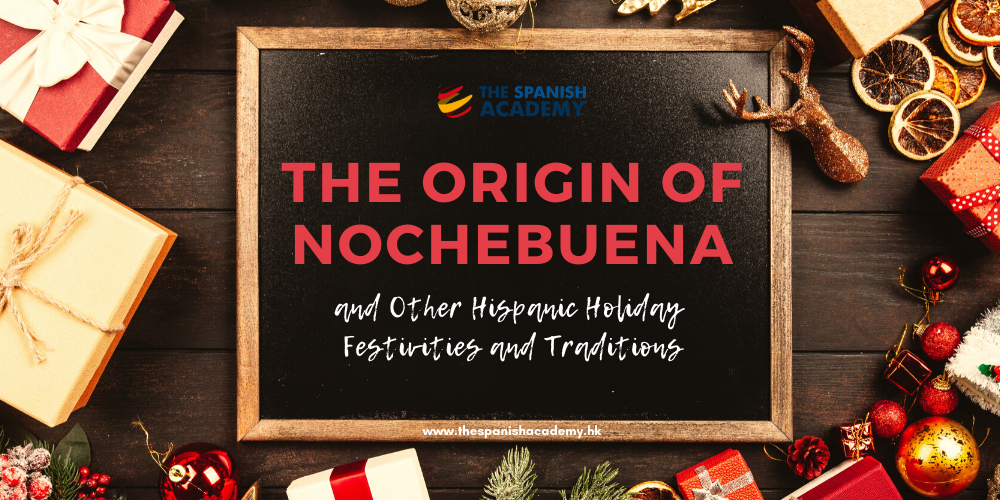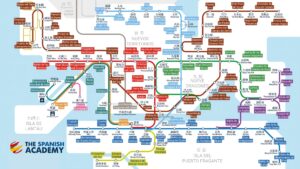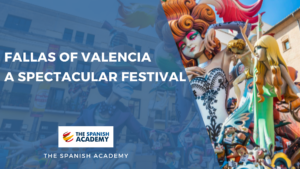It’s that time of the year again when families get together to have huge feasts, listen to Christmas songs and carols, exchange gifts, and just be merry!
But before we go diving into these delicious feasts and merriment, it would be good to know how other Hispanic cultures celebrate Christmas and other holiday traditions.
Let’s start with Nochebuena.
Nochebuena, Spanish for “the Good Night”, is celebrated every December 24th in Spain, Latin Countries, and the Philippines. It’s the traditional Christmas Eve feast where family members gather together to rejoice around the Nativity scene that is present in nearly every home. And as for the food, roasted pig, or lechón, is often the center of Nochebuena.
Aside from Nochebuena, here are other Hispanic Holiday Traditions that are as big (sometimes bigger) than Christmas.
1) Parrandas
The parranda is the Puerto Rican version of caroling. It starts when a small group of people (parranderos) get the party started, usually around 10 in the evening, by surprising a friend at their house with music from Puerto Rico. Some parranderos play musical instruments such as guitars, tambourines, and maracas, while others dance. And everyone sings.
Parrandas are spontaneous, so every household must be prepared all throughout the holidays and at all hours to receive guests. And most of the time, house owners offer the parrenderos drinks, such as Rum, and traditional Christmas food.
2) Dia de los Reyes Magos
Also known as Three Kings Day in many Spanish-speaking countries, Dia de los Reyes Magos is more important than Christmas. The holiday honors the arrival of the Three Wise Men — Balthazar, Melchor, and Gaspar— in Bethlehem, bearing gifts, to worship the newborn Christ child.
At the start of the new year, children typically write letters to Los Reyes Magos asking them for gifts. They eagerly await their arrival, leaving boxes of hay and bowls of water for the kings’ horses the night before. Children awaken on Jan. 6 to find the gifts that the three kings have brought them.
In Puerto Rico, it is traditional for children to leave grass or hay under their bed for the camels carrying the Three Kings.
3) Rollerskating in Venezuela
The week leading up to Christmas Eve, Venezuelans take to the streets to celebrate the holiday season but they add a spin to it. In the Venezuelan capital Caracas mainly, it is customary for the entire city to roller-skate to early morning Christmas Mass. Many roller-skates in plazas or closed-off roads in holiday parties called “patinatas.“
4) Novena
The Novena is a series of prayers that are said for nine straight days, starting on December 16th and ends on December 24th, in anticipation of the birth of Jesus. The prayers are petitions but also offerings of thanks. Families typically gather around nativity scenes and pray together. After prayer, people play instruments and sing Christmas carols.
In the Philippines, this tradition is known as Simbang Gabi. It was introduced by the Spanish friars to allow the farmers to hear mass before going to the fields early in the morning. The masses can start as early as 4 in the morning. In the olden days, the church bells start ringing as early as three o’clock, waking people up so they can get ready for the four o’clock dawn mass.
5) La Misa del Gallo
La Misa del Gallo, or the Rooster’s Mass, is celebrated at midnight on Christmas Eve to mark the birth of baby Jesus. The tradition of midnight mass on Christmas Eve was first chronicled by the Galician woman who witnessed how the early Christians of Jerusalem honored the Christmas mystery with a midnight vigil at Bethlehem.
This Catholic tradition originated in Rome and Spain but spread to other countries. In Bolivia, locals attend Christmas Eve Mass, and the celebration is followed by a sit-down meal featuring a traditional bowl of picana del pollo. It is a stew made of chicken with peas, carrots, and potatoes.
Today, Misa del Gallo is one of the most important celebrations across the Hispanic world and even in the Philippines, where it is “traditionally held at the crack of dawn”.
6) Tamaladas
Tamales are holiday staples in many parts of Latin America and Tamaladas is the Christmas tradition of making tamales. Tamales are traditionally made by women, date back to pre-Columbian times and have roots in Aztec and Mayan culture.
Making tamales can be time-consuming and labor-intensive so many people participate in tamaladas, or tamal-making parties. In these parties, participants gather together to swap recipes and bond as they prepare this delicious holiday staple in bulk.
Caribbean Latinos also enjoy a similar tradition, hosting an informal gathering in someone’s home where they make their own version of tamales: pasteles.
7) Posadas
Christmas Posadas are most popular in Mexico and Guatemala. During this time, children and adults dress up as Mary and Joseph in small processions that are held during the nine days before Christmas Eve.
From December 16th to Christmas Eve, children often perform the ‘Posada’ processions or Posadas. These celebrate the part of the Christmas story where Joseph and Mary looked for somewhere to stay. For the Posadas, the outside of houses is decorated with evergreens, moss and paper lanterns.
Each night, a different house hosts the Posada party. At the final Posada, on Christmas Eve, a manger and figures of shepherds are put on to the board. When the Posada house has been found, a baby Jesus is put into the manger and then families go to a midnight Church service.
8) Oaxaca Radish Festival Mexico
This tradition, also known as “Noche de Rabanos,” or “Night of the Radishes,” is a century-old celebration held every 23rd of December in the main square in the city of Oaxaca, Mexico.
On Christmas Eve, local churches parade handcrafted, non-radish-themed floats, and on Christmas Day, the plaza comes alive with fireworks and a traditional holiday dinner.
Artisans and amateurs alike carve and fashion radishes into elaborate scenes and human figures in one of the most unique celebrations in the world. Popular carving motifs include the nativity scene, Mayan imagery, local wildlife such as snakes and alligators, and intricate mission-style architecture.




